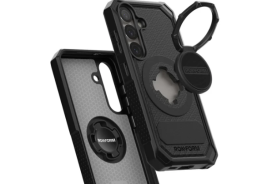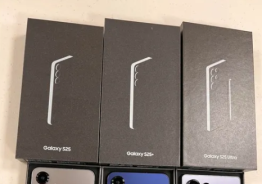Between the hotshot designers and brainy engineers Apple Inc questioned for three weeks in the company's bitterly fought patent battle against Samsung Electronics Co Ltd, a marketing expert from MIT took Apple's lawyers all of three minutes.
But the testimony from MIT Professor John Hauser cuts to a central dilemma in the smartphone patent wars. What is a single nifty feature worth? Hauser's answer: exactly $39 per phone for a device that recognizes a second finger on the touchscreen.
If such features are deemed to be as valuable as Hauser suggests, a verdict in Apple favor's might represent more than just a big payout in damages. It could also prompt the judge to award Apple a much bigger prize: a sales ban on Samsung mobile products.
Nine jurors began deliberating Apple's intellectual property claims against Samsung on Wednesday in a federal court in San Jose, California. If they decide Samsung, which is the world's largest smartphone maker, violated any of Apple's patents - or vice versa - the next question is how, exactly, each company should be made to pay.
The answer lies in the alchemy of estimating damages in high stakes intellectual property cases, in which slight changes in assumptions are worth billions of dollars and individual judges vary widely on how they handle the testimony of paid expert witnesses.
Further complicating the issue is a recent appellate court ruling that threw out damages rules that had been on the books for decades.
"In some ways we're in uncharted territory here," said Thomas Cotter, a professor at University of Minnesota Law School who is not involved in the litigation.
Apple is seeking more than $2.5 billion and a sales ban based on small subset of features it claims are in great demand among consumers. A verdict in Apple's favor would put large swaths of the smartphone industry at risk of similar legal troubles.
SKEPTICAL JUDGES
Apple's arguments on the value of the "market demand" for its features are embodied in Hauser's study, which surveyed Samsung customers over the Internet. It is a central pillar on which the iPhone maker's damages case rests.
Some judges are skeptical of such surveys. Earlier this year Judge Richard Posner, in federal court in Chicago, dismissed litigation between Apple and Google's Motorola Mobility unit after lambasting damages studies prepared by both sides.
In an interview with Reuters last month, Posner distinguished between customer surveys conducted by companies in their normal course of developing products and those done for litigation.
"It's a lot less credible," Posner said.
In Apple's battle against Samsung, however, swaths of expert damages testimony from both sides have been allowed into evidence.
Patent damages used to involve a principle known as the 25 percent rule: if a company infringed a patent, it risked paying 25 percent of its profits to the patent owner - regardless of how marginal the technology was to the overall product. Critics blasted the rule for unfairly large awards, and it was overturned last year.
The change gave rise to surveys, like Hauser's, which attempt to move away from arbitrary percentages and tie patented features to real world consumer preferences, said Roy Epstein, a professional damages expert who has not worked for Apple or Samsung.
It is up to judges to decide which studies are fit for juries to see. Posner believes those that focus the consumer's attention on one technological feature, to the exclusion of thousands of others, can artificially exaggerate its importance.
In court filings unsealed during the run-up to trial, Hauser argued his study solves that problem by showing consumers different phones with varying features.
"A multi-feature task discourages respondents from guessing that the researcher is interested in a particular feature, which would, in turn, cause the respondent to believe that the researcher is 'demanding' a particular response," Hauser wrote.
Samsung did not seek to bar Hauser's testimony before trial, and U.S. District Court Judge Lucy Koh can consider it when mulling a permanent sales ban if the jury goes Apple's way.
BACK TO THE MONEY
Hauser believes smartphone users would be willing to pay $100 more for phones with multitouch and two other features. Cue Apple's key accounting expert, Terry Musika: based in part on Hauser's findings, Musika testified that Samsung should pay a royalty of $7.14 per phone on those three patents.
Combined with Apple's design claims --covering flourishes like rectangles with rounded corners - Musika gave the jury a scenario to award Apple a royalty of about $540 million. That amount would not slow down a global tech purveyor like Samsung.
Musika also handed the jury another option to compute Samsung's tab, based on the Korean company's profits, an approach that would ramp up the potential payday. Musika pegged Samsung's gross profit margins for the phones at issue in the lawsuit at 35.5 percent, or more than $2.2 billion.
Judges are allowed to bar experts based on problems with their methods. In Oracle's copyright battle against Google, for instance, U.S. District Court Judge William Alsup forced Oracle to rework its damages arguments more than once.
But while judges can bar an expert if they think his or her methods are bogus, they are supposed to let jurors sort out the assumptions. Samsung's expert, Michael Wagner, criticized Musika for failing to account for marketing, R&D and other costs that would reduce Samsung's profits. Wagner's scenario put Samsung's vulnerable profits at $519 million.
Patent damages expert Epstein said good experts only go so far when devising numbers for their clients.
"I tell them, I'm perfectly happy to consider any damages theory, but then I ask myself, What questions does such an approach raise?" Epstein said.
"If I don't have a principled answer, there's a line beyond which you can't go."
The case in U.S. District Court, Northern District of California, is Apple Inc v. Samsung Electronics Co Ltd et al, No. 11-1846.
Copyright 2020 Thomson Reuters. All rights reserved.
















